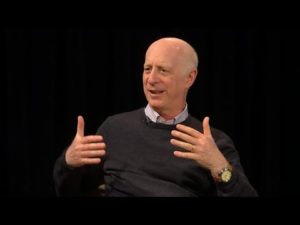

It led to the creation of HOK Sports in 1983, now Populous, and several other spinoff firms. The pioneering design of Kauffman and Arrowhead by local architect Charles Deaton working with the firm of Kivett & Meyers launched the city’s sports architecture reputation. “Kansas City went against the grain and built separate stadiums.” “It’s one of the only incidents in those years, Dodger Stadium being the other, where the city chose not to give in to wrongheaded fad of creating mixed-use stadiums,” he said. Truman Sports Complex, which opened in 1973, gave Kansas City a lead role in reversing what Goldberger referred to as the “concrete doughnut” era of sports facilities following World War II that combined football and baseball. “Ever since Camden Yards brought baseball back to the city, we now have extraordinary array of great urban ballparks in our own time.” “We lost touch with that for several decades when we were building almost everything we could in the suburbs to accommodate the automobile. “That is the premise of the book I just wrote. “The story of our ballparks is the story of our cities,” he said. Goldberger’s talk reviewed Kansas City’s preeminent role in the sports architecture world and how baseball’s return to downtowns around the country beginning with Camden Yards in Baltimore in 1992 has returned the game to its urban roots.

But it would take years to assemble land and design a new ballpark should that option be chosen. The Royals lease at Kauffman expires in 2031, which may sound a long ways off. Paul Goldberger’s new book was released last spring. John Sherman, the new Royals owner, has expressed support should the right deal come together.

Goldberger’s observations come at pivotal time when the idea of a downtown ballpark is back on the community agenda. Kansas City has a downtown that is filled with demand, filled with activity, filled with all the things you need for a ballpark.” “It is a time to consider actually building a downtown ballpark. “Baseball can contribute an enormous amount to downtown, but it can rarely do the job of initiating an entire downtown renewal by itself,” he said. “Kansas City was hoping the ballpark would jumpstart a whole downtown renewal, which probably was too much to expect,” Goldberger told the 1,000 people at the Kay Barnes Ballroom in the Convention Center. The Pulitzer Prize-winning architectural critic who wrote for the New York Times, the New Yorker and now Vanity Fair was the keynote speaker at the Downtown Council annual luncheon Thursday. Kansas City was “lucky” 15 years ago not to build a downtown ballpark when the Royals lease was last up, according to Paul Goldberger, author of the new book “Ballpark: Baseball in the American City.” Sponsor Message Become a Flatland sponsor


 0 kommentar(er)
0 kommentar(er)
